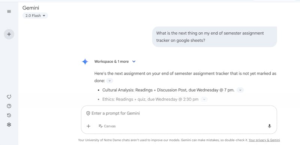Google DeepMind Releases Its AI Text Watermarking Tool as Open Source

Introduction to AI Text Watermarking
In the rapidly evolving landscape of artificial intelligence (AI), the challenge of distinguishing between human-generated and machine-generated content has become increasingly important. With the advent of advanced AI models, the need for reliable methods to identify automated text has gained significant attention. Google DeepMind has recently made strides in this area by open-sourcing its AI text watermarking tool, a development that is poised to have major implications for both tech developers and content consumers.
What is AI Text Watermarking?
AI text watermarking involves embedding a digital signature or code within the text generated by AI models. This watermark can indicate whether a piece of content was specifically produced by an AI system. The primary goal of this technology is to ensure transparency and accountability in content generation, thereby aiding in the combat against misinformation and plagiarism.
Benefits of AI Text Watermarking
Content Authenticity: Watermarking helps verify the source of the text, making it easier to distinguish between content created by AI and that produced by humans.
Improved Trust: By indicating whether content is AI-generated or not, watermarking can help build trust between users and content providers, especially in journalism and academia.
Mitigating Misinformation: The technology can serve as a tool for organizations and platforms to identify and minimize the spread of false information.
- Users’ Awareness: Watermarked content allows audiences to be more informed about the sources of their information, empowering them to make better decisions.
How Does Google’s Watermarking Tool Work?
Google DeepMind’s watermarking tool operates by embedding specific patterns into the text generated by AI. These patterns are subtle and difficult for a casual reader to notice, yet they are detectable through specialized algorithms. When the text is analyzed with this tool, it can reveal whether the content was created by an AI model.
Key Features of the Tool
Open Source: Google has made the tool available for developers and researchers to use and improve upon, promoting collaboration and innovation.
Versatility: The watermarking method can be integrated with various AI models, making it adaptable for different applications.
- Secure Detection: The tool utilizes robust algorithms that enhance the accuracy of watermark detection, ensuring that results are reliable.
Implications of Open Source Technology
The decision to open source this watermarking tool is significant for several reasons. It encourages a collaborative approach to address the complex issues surrounding AI-generated content. Here are some potential implications:
Enhanced Innovation: By allowing others to access and modify the tool, developers can create improved methods for watermarking that could lead to more advanced technologies.
Broader Adoption: Open sourcing can lead to widespread implementation of watermarking across different platforms, enhancing overall content authenticity.
- Community Contributions: Developers from around the world can contribute to the advancement of the tool, fostering a sense of community among those working in AI and its ethical ramifications.
Future of AI Text Watermarking
As AI technology continues to advance, the importance of effective watermarking will only grow. The capability to identify AI-generated content will be crucial in various sectors, including journalism, education, and social media. With tools like Google’s watermarking solution, industries will be better equipped to tackle challenges related to misinformation and content integrity.
Next Steps for Developers and Users
Experimentation: Developers are encouraged to experiment with Google’s watermarking tool, adapting it for their specific needs and contexts.
Education: Users should be educated about the importance of watermarking, including how to identify and interpret watermarked content.
- Policy Development: Organizations should consider creating policies that incorporate AI watermarking to ensure responsible content usage.
In conclusion, Google’s open-source AI text watermarking tool represents a significant step forward in addressing the challenges posed by AI-generated content, promoting transparency, and safeguarding the integrity of information sources.






